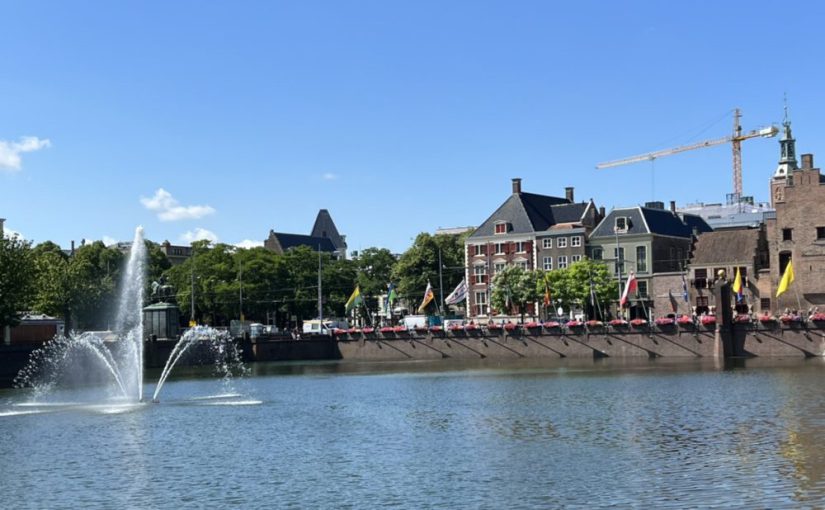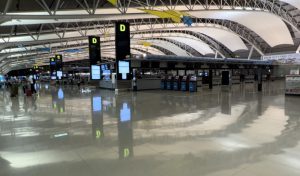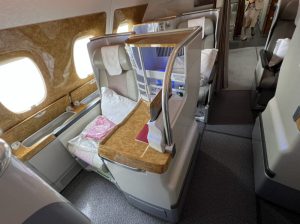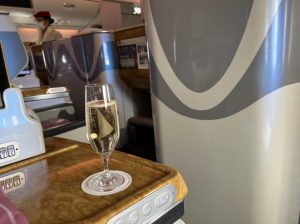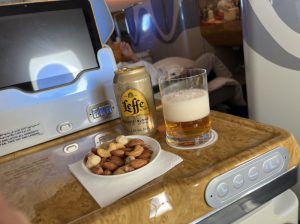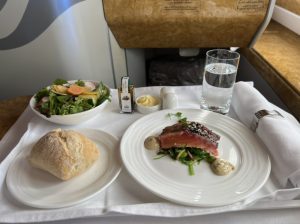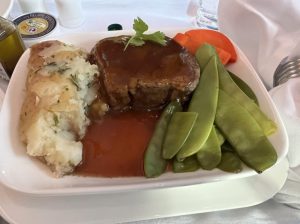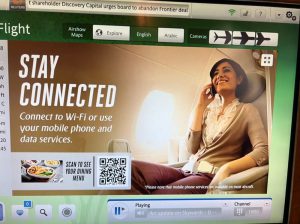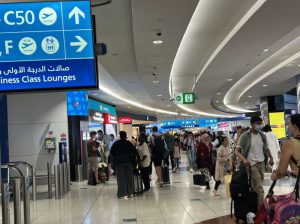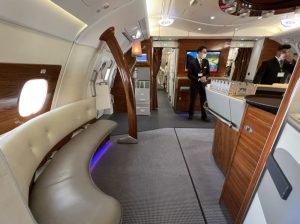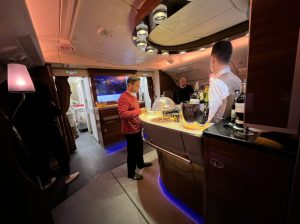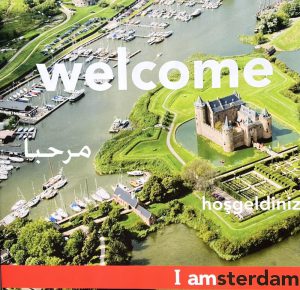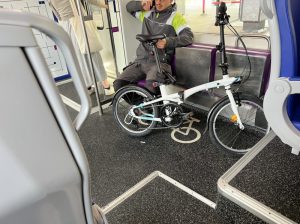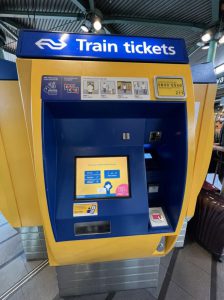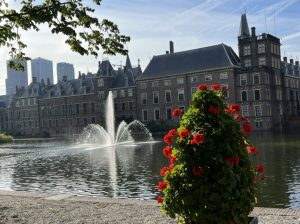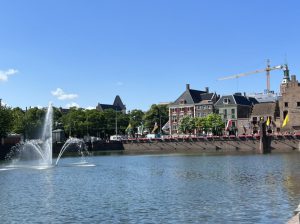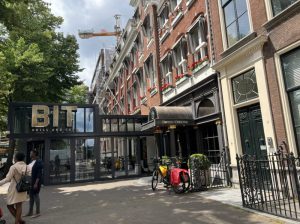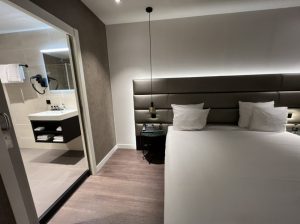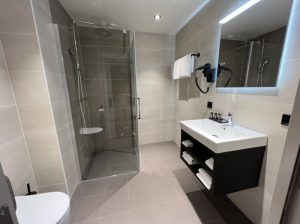At the start of this trip, the first thing that surprised and impressed me was how deserted the departure airport, Kansai International Airport, was. When I arrived at Kansai Airport around 9:00 p.m. after getting off the Bay Shuttle express boat from Kobe Airport, there were so few people in the international departure lobby that I wondered if I could count the number of people. The quietness of the area was a world apart from the many passengers who used to crowd the area.
Of course, the shopping zone was almost completely shuttered, and there were no stores open. Most of the restaurants that used to be so crowded were closed, and the only ones that were open were Sukiya and McDonald’s. I took a break and had a light meal at McDonald’s. After having a light meal at McDonald’s, we checked in, went through immigration procedures, and were on the plane. This was almost my first time to fly business class. I had heard that Emirates has a reputation for good service, so I was looking forward to it and settled into a more spacious seat than the economy seats.
We also enjoyed a very elaborate meal while tasting the complimentary champagne and beer.
At that time, I suddenly looked at the monitor in front of my seat and saw this screen.
In addition, I received this short email.
Apparently you can use the internet on board. (Doesn’t everyone think so?) I had to give it a try, so I connected my phone in Wi-Fi mode, and lo and behold, it worked. Well, it wasn’t quite smooth, but it was usable enough to search the Internet, send e-mails, and talk on line. I was impressed, and I was using it for a while, but I didn’t imagine at that time that this trial would cause a lot of trouble for the whole tour. A short time later, I received a short email from Softbank, the carrier with which I had a contract, warning me that “Please be aware that your usage fees are getting expensive. Thinking about it, flying at such a high altitude as an airplane, there is no way to connect to a ground relay station, and if you are using a satellite further up in the sky, it is possible that the charge for this service would be expensive. If so, why is there no mention of this, and why is such a high fee being charged by a Japanese telecommunications company and not by the airline on which I am currently flying? (This issue will cause a big problem later on during my stay in Europe, and I am currently asking Emirates and Softbank to explain the reasons in detail.)
With a sense that a cloud of anxiety was beginning to hang in the air, we nonetheless arrived safely in Dubai, our transit point. I wondered if the shopping zone in the airport would be open at around 5:00 a.m. local time, but when I actually arrived, I was surprised to find that not a single store was closed or closed, a completely different world from the deserted Kansai International Airport. (What was surprising, however, was that almost everyone there was wearing masks, just like in Japan.)
Nevertheless, I thought that this huge gap between his and my situation has had an enormous impact, at least on the tourism and transportation industries. However, the coronary disaster, which had once seemed to have settled down, has recently shown a rapid spread of infection again, newly considered the seventh wave, and it seems that it is difficult to make policy decisions on how to coordinate medical issues with economic problems.
As expected, the flight time was well divided around Dubai, the transit point, as we had originally anticipated, and the good environment of the business class cabin made us feel not so tired. In fact, there was even a dedicated bar lounge (although I didn’t have the nerve to chat and drink alcohol with a foreigner I didn’t know in such a place💦).
After about 6 hours from Dubai, we finally arrived at Schiphol Airport in the Netherlands, the first time in half a century that we have landed in Europe in a long time.
The only small problem that arose from that was getting to The Hague, where the hotel was located. I was immediately struck by the situation. After all, it was probably the result of not doing enough research beforehand and acting on assumptions.
The Schiphol airport station is located between the central station of Amsterdam, the central city of the Netherlands, and The Hague, my destination. Furthermore, as this is the first time for me to ride a train in the Netherlands, I found it unusual that there was a dedicated space for bicycles on the train, as this is a country where bicycles are very popular, and while I was taking pictures of it, I missed the terminal station, the Central Station.
It was an early easy mistake, although there were no friendly (too friendly?) announcements like in Japan. This was an early easy mistake, even though there were no announcements and the station signs were modest and unobtrusive. After going a few stations too far, I noticed a change in the situation, asked a passenger about it, and had to get off and turn around in a hurry. Well, it was an unusual way to buy a ticket, and I guess I was nervous, but it was a mistake that left me wondering what would happen next.
In the end, it took about an hour from the airport to arrive at The Hague Central Station, where an acquaintance was waiting to pick us up. In the words of the acquaintance, “I was able to toddle in at the end,” and I felt more tired from the strain of the wandering train journey than from the long flight.
However, I breathed a sigh of relief when I arrived at the hotel, which was located in a calm environment amidst lush greenery just a 10-minute walk from The Hague Central Station and right next to Binnenhof, one of The Hague’s major tourist attractions.
Hotel in The Hague for the first 3 nights
